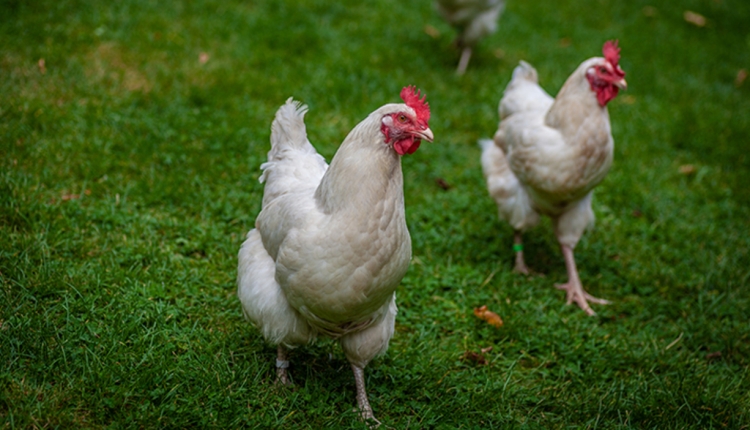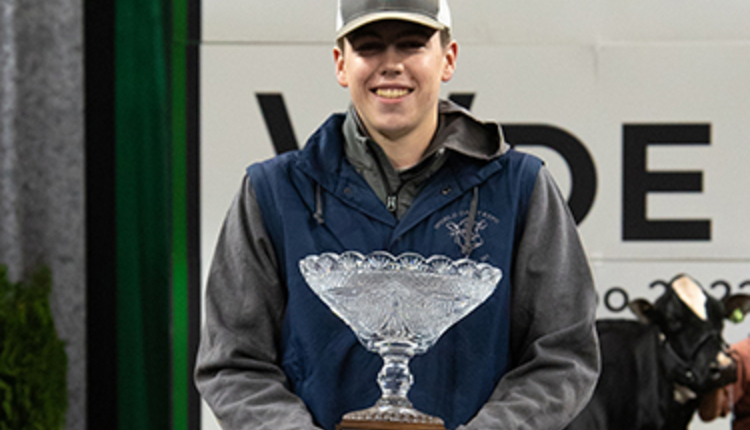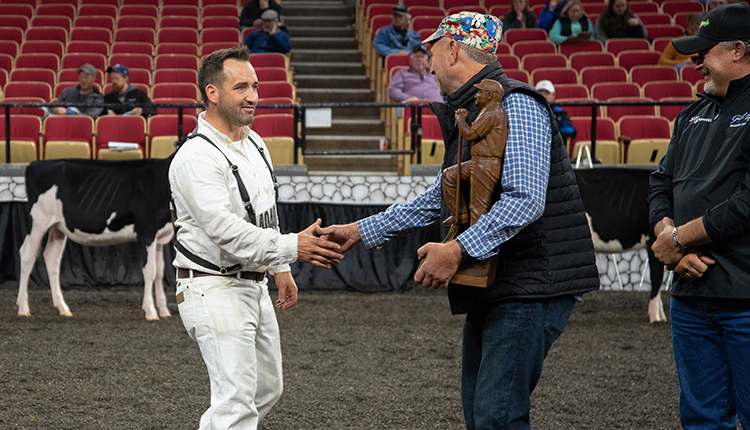Like other regions of the Midwest, northeast Wisconsin experienced a cool, late spring that included above-average rainfall. That led to short windows to actually get manure hauled, fields tilled and crops planted . . . if you could move at all. As these weather conditions lingered, the planting season and first crop hay harvest windows began to merge into one.
I am blessed to count my immediate family and my wife's family among the nation's 47,000 dairy producers who quite frequently help out on both operations. This spring was no exception as my father-in-law, Pete, was recovering from hip surgery. So I offered up my services to my brother-in-law Charlie, and he quickly accepted.
By Memorial Day, the Omro, Wis., farm had given up on getting manure hauled with new hopes of emptying their manure basin later this summer on wheat ground since they still had room in the basin. That freed up much-needed time to work fields, seed alfalfa, and plant corn and soybeans on their 600-acre dairy.
When I arrived for the three-day weekend, fieldwork and planting had blended into one action with three tractors running nonstop. Always cautious when running unfamiliar equipment, I soon found my groove working up 60 acres with the farm's Steiger tractor as my first assignment.
The first fix: As time went on, I noticed the tractor was losing power, and I kept gearing down. I knew something wasn't right, yet the tractor's gauges were reading fine. I called Charlie, my brother-in-law and chief farm mechanic. He arrived and watched from the truck for a bit, then took a spin with me around the field. We both agreed it was either a dirty air filter or a fuel filter. The tractor limped to home base. Since the air filter had recently been replaced, we decided to check out the fuel filter. After pulling both fuel filters, installing new ones and bleeding the line, we were back in business.
The second fix: Just before I had called Charlie about the fuel-filter issue, the soybean planter had blown a hydraulic line. Since my wife, Charlie's sister, was along for the weekend, she was dispatched to get a new hydraulic hose. Without that part acquisition late on Saturday, we could not raise the planter off the ground. To say the least, we were grounded until the repair was completed in the field. As all this took place, thankfully the corn planter kept rolling without a hitch.
The third fix: Just as day broke Sunday morning, Charlie got the soybean planter up and rolling, and my father-in-law, Pete, gave me training on the equipment. With a few passes under my belt, he was off, and I spent most of the morning seeding the 40-acre parcel.
At midday, I moved on to another 20-acre parcel. After about four turns in the field, I heard a sound that wasn't normal. I shut off the radio and opened all the windows on the tractor's cab and continued planting . . . very slowly. That's when I placed the high-pitched squeal. The cleaners for the crusher wheels were rubbing on the crushers. After stopping and lifting the entire planter out of the ground, I was extremely concerned to see a significant bow in the crushers. That's when I called in additional brain power.
Both Pete and Charlie arrived within five minutes. By then I had discovered that the bolts holding the center support beam had snapped. Why? We don't know, but it had happened in previous years. Charlie suggested that we remove the crusher cleaners since the ground was dry and use a few bolts that were the same exact size to reattach the support beam. We grabbed a pair of 15-16 wrenches and started the project. After 10 minutes, we tested the planter, and it appeared good to go. I went back to planting, and they returned to their field jobs.
The fourth fix: About two hours later, I was running low on seed, and my wife and an intern delivered a few bags of seed. Since this was the last field of beans, I had them wait to help clean out the planter bins for the year. In making the last pass for the year, the shaft that held one side of the planter's two crushers detached (it likely became loose from the earlier breakdown), coming out of the hub that held it in place. Since two people were sweeping seed in back of the planter, I was running at slow speeds and was fortunate to stop before the crusher ran under the seeder wheels, creating even more damage.
At that point, I was beyond frustrated. How were we going to fix this?
My father-in-law was in the field because we had planned to grab the crusher cleaner we removed earlier when I was finished planting. Now, it looked like the planter was staying in the field, too.
That's when my father-in-law lifted my spirits and refocused my energy. He said, "Take the hub off (we had tools with us) and push the crusher back in place (the other side was still attached)." And that's what the four of us did. It almost lined up, but the hub mount was too high. He then sat on the frame, and everything lined up. We slid the bolts in and were back planting in less than 10 minutes. It was at that moment I firmly believed that a Higher Power was looking down on our planting season.
Planting 2014: The rest of the weekend went on with only one hitch when a rock rolled up and broke the valve stem on the corn planter. The ever-resourceful Charlie fixed that within the hour, and by the time we left on Monday, all the crops were in the ground.
The following week, both families moved onto the first crop hay harvest. Of course, that involved other breakdowns involving the disc mower and a fan belt on the main chopping tractor. But once again, ingenuity eventually trumped breakdowns just as it does on many of your farms. It also reminds us all no matter how well we plan and maintain equipment, life still throws us curve balls that we must deal with.

The author is the managing editor, and he brings 18 years of industry leadership to our readers overseeing all editorial content and production of the magazine. His degree from the University of Wisconsin-Madison combined dairy science and agricultural economics.
I am blessed to count my immediate family and my wife's family among the nation's 47,000 dairy producers who quite frequently help out on both operations. This spring was no exception as my father-in-law, Pete, was recovering from hip surgery. So I offered up my services to my brother-in-law Charlie, and he quickly accepted.
By Memorial Day, the Omro, Wis., farm had given up on getting manure hauled with new hopes of emptying their manure basin later this summer on wheat ground since they still had room in the basin. That freed up much-needed time to work fields, seed alfalfa, and plant corn and soybeans on their 600-acre dairy.
When I arrived for the three-day weekend, fieldwork and planting had blended into one action with three tractors running nonstop. Always cautious when running unfamiliar equipment, I soon found my groove working up 60 acres with the farm's Steiger tractor as my first assignment.
The first fix: As time went on, I noticed the tractor was losing power, and I kept gearing down. I knew something wasn't right, yet the tractor's gauges were reading fine. I called Charlie, my brother-in-law and chief farm mechanic. He arrived and watched from the truck for a bit, then took a spin with me around the field. We both agreed it was either a dirty air filter or a fuel filter. The tractor limped to home base. Since the air filter had recently been replaced, we decided to check out the fuel filter. After pulling both fuel filters, installing new ones and bleeding the line, we were back in business.
The second fix: Just before I had called Charlie about the fuel-filter issue, the soybean planter had blown a hydraulic line. Since my wife, Charlie's sister, was along for the weekend, she was dispatched to get a new hydraulic hose. Without that part acquisition late on Saturday, we could not raise the planter off the ground. To say the least, we were grounded until the repair was completed in the field. As all this took place, thankfully the corn planter kept rolling without a hitch.
The third fix: Just as day broke Sunday morning, Charlie got the soybean planter up and rolling, and my father-in-law, Pete, gave me training on the equipment. With a few passes under my belt, he was off, and I spent most of the morning seeding the 40-acre parcel.
At midday, I moved on to another 20-acre parcel. After about four turns in the field, I heard a sound that wasn't normal. I shut off the radio and opened all the windows on the tractor's cab and continued planting . . . very slowly. That's when I placed the high-pitched squeal. The cleaners for the crusher wheels were rubbing on the crushers. After stopping and lifting the entire planter out of the ground, I was extremely concerned to see a significant bow in the crushers. That's when I called in additional brain power.
Both Pete and Charlie arrived within five minutes. By then I had discovered that the bolts holding the center support beam had snapped. Why? We don't know, but it had happened in previous years. Charlie suggested that we remove the crusher cleaners since the ground was dry and use a few bolts that were the same exact size to reattach the support beam. We grabbed a pair of 15-16 wrenches and started the project. After 10 minutes, we tested the planter, and it appeared good to go. I went back to planting, and they returned to their field jobs.
The fourth fix: About two hours later, I was running low on seed, and my wife and an intern delivered a few bags of seed. Since this was the last field of beans, I had them wait to help clean out the planter bins for the year. In making the last pass for the year, the shaft that held one side of the planter's two crushers detached (it likely became loose from the earlier breakdown), coming out of the hub that held it in place. Since two people were sweeping seed in back of the planter, I was running at slow speeds and was fortunate to stop before the crusher ran under the seeder wheels, creating even more damage.
At that point, I was beyond frustrated. How were we going to fix this?
My father-in-law was in the field because we had planned to grab the crusher cleaner we removed earlier when I was finished planting. Now, it looked like the planter was staying in the field, too.
That's when my father-in-law lifted my spirits and refocused my energy. He said, "Take the hub off (we had tools with us) and push the crusher back in place (the other side was still attached)." And that's what the four of us did. It almost lined up, but the hub mount was too high. He then sat on the frame, and everything lined up. We slid the bolts in and were back planting in less than 10 minutes. It was at that moment I firmly believed that a Higher Power was looking down on our planting season.
Planting 2014: The rest of the weekend went on with only one hitch when a rock rolled up and broke the valve stem on the corn planter. The ever-resourceful Charlie fixed that within the hour, and by the time we left on Monday, all the crops were in the ground.
The following week, both families moved onto the first crop hay harvest. Of course, that involved other breakdowns involving the disc mower and a fan belt on the main chopping tractor. But once again, ingenuity eventually trumped breakdowns just as it does on many of your farms. It also reminds us all no matter how well we plan and maintain equipment, life still throws us curve balls that we must deal with.

The author is the managing editor, and he brings 18 years of industry leadership to our readers overseeing all editorial content and production of the magazine. His degree from the University of Wisconsin-Madison combined dairy science and agricultural economics.









